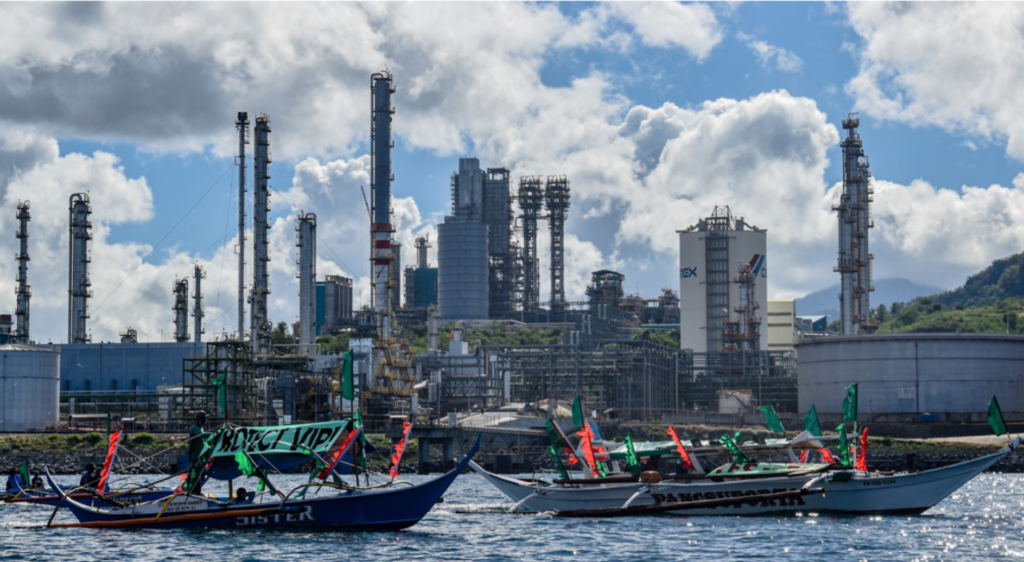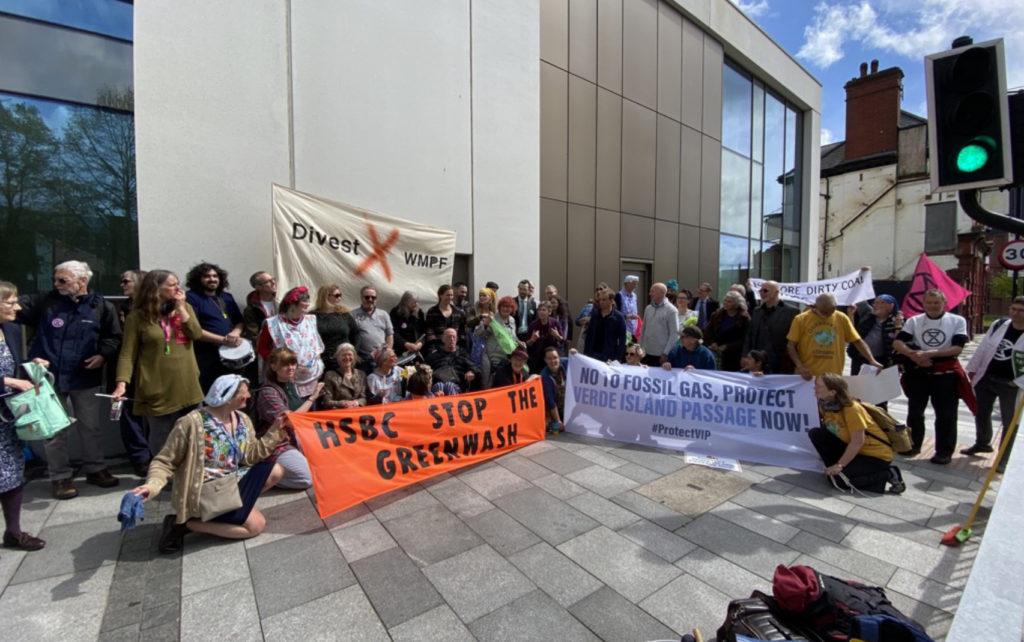Environmental Issues Around San Miguel Corporation Deter Investors
12 June 2024 – by Viktor Tachev Comments (0)
San Miguel Corporation Problems and Solution
San Miguel Corporation (SMC) regularly finds itself in hot water regarding environmental issues. Its indiscretions include building LNG infrastructure in the world’s centre of marine biodiversity, an oil spill affecting 200,000 Filipinos, water pollution, indigenous land rights violations and legal battles over price hikes.
Despite the public backlash and the heavy opposition from environmentalists, activists and civil society groups, SMC continues to expand its fossil fuel fleet, backed by Asian and Western investors.
Who Owns San Miguel Corporation?
San Miguel Corporation is owned by Zobel Family that still holds significant stakes in San Miguel Corporation, other major shareholders include institutional investors such as pension funds and mutual funds.
San Miguel Corporation Pushes Ahead With Fossil Fuels in The Philippines -Despite Heavy Opposition
The portfolio of SMC Global Power (SMCGP), SMC’s power generation business arm, has a total capacity of 4.7 GW. Fossil fuels make up 87%, with hydropower at 12% and battery energy storage and peaking points at 1%.
The proposed new coal capacity is 1.9 GW. However, there is some uncertainty around it, considering the introduced coal moratorium policy by the Department of Energy (DOE). Since 2020, it has shelved 10 of SMCGP’s coal-fired projects (a total capacity of 6.1 GW).
SMCGP is also planning for the largest gas expansion in Southeast Asia. The eight gas-powered projects in the pipeline have a total capacity of 14.1 GW.
Despite a 2018 goal to have 10 GW in clean energy capacity by 2028, the company doesn’t yet own any operational assets. Its plans feature 800 MW of solar capacity and 1 GW in battery storage capacity in the next three years.
According to the Center for Energy, Ecology and Development (CEED), SMCGP envisions spearheading the gas industry’s expansion, similar to what it did with coal in the past decade.
Doing so risks cementing its image as the culprit of environmental destruction in the Philippines and the region. The company has so far seemed unfazed by the growing opposition and public pressure. However, the question is whether its investors are willing to gamble their reputations by continuing to support SMC’s projects.
IEEFA: SMCGP’s Coal-to-Gas Switch Risks Exacerbating Existing Financial Issues
In its “San Miguel Global Power: Fossil Fuel-Oriented Growth Strategy Raises Financial Red Flags” report, the IEEFA examines the company’s key financial metrics and reaches the following conclusions.
SMCGP Might be Facing Financial Woes
The authors conclude that the ambitious gas expansion plans have dramatically raised the company’s capital expenditure. SMCGP covers them through debt instruments, including loans, bonds and issuances of perpetual securities.
The report projects the company’s near-term liquidity crunch could evolve into a longer-term funding shortfall. Among the key factors is the overexposure to volatile fossil fuel prices and their importance for SMCGP’s profitability.
The IEEFA notes that switching from coal to gas will exacerbate the problem of high power costs since the latter is three times more expensive. Furthermore, LNG prices will remain higher than the historical average through 2030. None of SMCGP’s existing or proposed LNG plants have long-term contracts to hedge against volatility.
“SMCGP investors should tread cautiously,” says Hazel James Ilango, an energy finance analyst at the IEEFA and report’s co-author. “The company’s elevated net debt-to-earnings, potential difficulties meeting financial obligations, and high fossil fuel exposure create additional risk of devaluation, particularly in the long term,” she adds.
Over the 2022 financial year, the analysts note that SMCGP’s operating income fell by 22%
Potential Debt Servicing and Credit Rating Issues
According to the IEEFA, based on the current earnings, the company will need almost twice as long to service its debt. On top of that, SMCGP’s options to access affordable capital markets are limited due to its weak financial profile, the tightening funding conditions and the fact that global financial institutions increasingly recognise climate-related investment risks.
Furthermore, in October 2022, Bloomberg reported that SMC faced a weakening credit profile and a potential funding shortfall. The company denied the claims.
In April 2023, Fitch recommended an “underperform” status for SMCGP due to concerns about its ability to pay back bond creditors and acquire additional debt financing at reasonable costs.
At the same time, the IEEFA notes that just 0.1% of funds from SMGPH’s most recent bond issuance went to renewables, compared with 76% for fossil fuel projects.
Investing in a Dying Industry
The IEEFA notes that SMCGP owns over 60% of coal projects under development in the Philippines despite an existing government moratorium. Furthermore, it accounts for half of the newly proposed LNG capacity.
The aggressive expansion plans risk locking the company and its investors into a massive stranded asset problem.
A previous IEEFA analysis estimated that just 29% of the LNG projects in the Philippines were viable, warning that the LNG-to-power investors faced USD 14 billion in stranded asset risk.
On top of that, there is major uncertainty over the expansion plans. First, SMC risks surpassing market share limitations even with its projects currently under construction, which could cause regulatory roadblocks. Meanwhile, while only 3-4 million tonnes of LNG are needed annually, the proposed projects will produce 20 million tonnes. As a result, parts of the infrastructure risk sitting idle.
Investors in the San Miguel Corporation Face Reputational Risks
SMC’s leading shareholders and investors include the Government of the Philippines, public-private consortiums and prominent global financial institutions. However, the investors have the influence and responsibility to force SMCGP to speed up, not impede, the clean energy transition.
Reluctance to do so will leave them with two options. They can either divest from SMC or embrace the reputational risk of being associated with the company and the controversies surrounding it.
SMCGP Is Becoming the Culprit of High Energy Costs
In 2022, SMC subsidiaries, alongside the power distribution company Meralco, filed a joint petition to charge higher power rates under its agreed straight pricing power supply agreements. The cited reason for passing the cost increase to consumers was to ease the burden of the increasing prices of imported coal and natural gas.
The Energy Regulatory Commission denied the petition. The case ended in court, where SMC and its subsidiaries won. CEED notes that the legal battle continues as consumers call for mandatory straight pricing and accountability for SMC and Meralco. In its latest report, the organisation cites Filipino households. They claimed that in the first five months after the development, electricity bills increased dramatically compared to the previous year.
However, according to the IEEFA, the company will likely continue pushing for a full pass-through of fuel costs to consumers to shore up its financial position and fund its fossil fuel expansion. Such a move will potentially face opposition from the Philippines’ leadership, including the DOE and President Marcos Jr., who pledged to lower energy costs.
At the same time, the IEEFA estimates that the price of renewables-produced electricity in the country is twice as low as that of imported LNG.
San Miguel Corporation – Environmental Issues
SMC prides itself on being a sustainability champion. In its 2022 Sustainability Report, the company states: “Conserving our ecosystems and protecting their natural habitats from significant threats should be of utmost importance, not only for the government but also for the private sector.” SMC pledges to “pursue transition of existing power portfolio to significantly reduce GHG emissions”. It prides itself on constantly working to improve ESG ratings and puts climate change on top of its priorities list.
Yet, its actions demonstrate that some of these claims are pure greenwashing.
Environmental and Ecosystem Damage From Fossil Fuel Infrastructure
SMC is developing fossil fuel infrastructure in the Verde Island Passage – the most biodiverse marine habitat in the world. Dubbed the “Amazon of the Oceans”, it provides food to over 2 million people. Studies show that the activities can disturb the already dwindling coral cover, disrupt fishing, increase water temperature and contaminate soil and water with toxic metals.
Furthermore, while priding itself on programs for mangrove forest restoration, SMC’s fossil gas expansion has destroyed a mangrove park in Navotas.
The Oriental Mindoro Oil Spill
In February 2023, SMC’s name was associated with one of the worst oil spills in the history of the Philippines. It reached the Verde Island Passage, causing health issues for over 42,000 affected families and 200,000 individuals across 12 municipalities. The spill also inflicted massive damage on the fishery and agriculture industries.
According to CEED, despite calls from affected communities and various organisations for all responsible to be held accountable, meaningful action hasn’t been brought against SMC or its subsidiaries yet.
The Public Opposition Against SMC is Growing Stronger
Over the years, SMC has faced opposition in many of its projects from frontline communities, civil society organisations, environmentalists and faith-based organisations. From the 2017 Break Free campaign against coal projects to protests from fisherfolk and farming communities in June 2023, SMC’s brand has been consistently associated with environmental disasters, facing strong public opposition and even violent protests.

Due to the growing public opposition, SMC has already cancelled three of its projects’ environmental impact assessment applications. The 1.7 GW LNG power plant in Verde Island Passage now faces a cease-and-desist order for several environmental violations, including lacking a land conversion permit. Four out of eight SMC projects now face delays and could be cancelled.
Many Financiers Are Starting to Divest From the San Miguel Corporation
Investors are becoming increasingly wary of SMC’s reputation and ESG status.
The company doesn’t support the Task Force on Climate-Related Financial Disclosures. This indicates its reluctance to assist investors and lenders in adequately assessing and pricing climate change-related risks.
In April 2023, the German asset manager, DWS, divested from SMC due to ESG considerations. More companies are likely to follow.
Protect VIP and other organisations have already launched a campaign against banks and investment firms supporting the project. The group is attending the annual general meetings of banks across the Philippines, Japan and Europe to confront them on their policies and exposure to fossil gas projects in the VIP.

The biggest funders of SMC currently are Japanese banks, which continue to fund its fossil fuel projects despite the enormous public backlash and financial and reputational risks.
According to CEED, ING is also among SMC’s leading funders. From 2020 to 2022, it provided USD 311 million in financing and USD 236 million in bond underwriting. The Dutch bank is renowned for its stellar reputation and progressive climate and sustainability policies. It is also leading the shift away from financing oil and gas infrastructure by restricting investments in such projects. However, retaining its reputation as a climate leader and staying true to its focus on protecting biodiversity means divesting from SMC and its environmentally destructive projects.
San Miguel’s Investors Can Determine the Course of the Energy Transition in the Philippines
Investors not only have the responsibility but also the incentive to promote renewables instead of gas. According to IRENA, every dollar invested in the clean energy transition generates three to eight times the return. Furthermore, clean energy projects can become operational much faster than LNG. Wind projects can take two to six months, with six to 18 months needed for solar, depending on size and complexity. LNG import terminals might take three to five years in developed countries and longer in countries like the Philippines.
According to Nicole Rath, fossil free finance campaigner at Urgewald, if SMC and its investors abandon the gas projects and switch to renewables, the company would finally become independent from imported resources. At the same time, financial institutions wouldn’t have to risk their reputations anymore by supporting SMC.
“The company would become investable again for a whole range of investors who care about the environment,” she adds.
This, coupled with the controversies surrounding SMCGP, incentivises investors to skip the coal-to-gas switch and prioritise clean energy investments or divest from the company to avoid financial and reputational risks.
Asked what investors in SMCGP’s fossil fuel projects stand to lose from their involvement, Rath says: “There’s a global campaign against SMC and its financiers and investors, and it’s getting bigger and bigger. Financial institutions can expect protests in front of their branches and media articles calling them out for their involvement.”
by Viktor Tachev
Viktor has years of experience in financial markets and energy finance, working as a marketing consultant and content creator for leading institutions, NGOs, and tech startups. He is a regular contributor to knowledge hubs and magazines, tackling the latest trends in sustainability and green energy.
Read more








